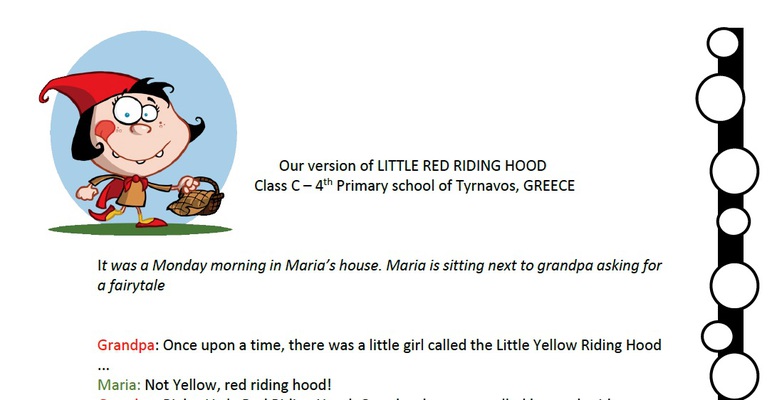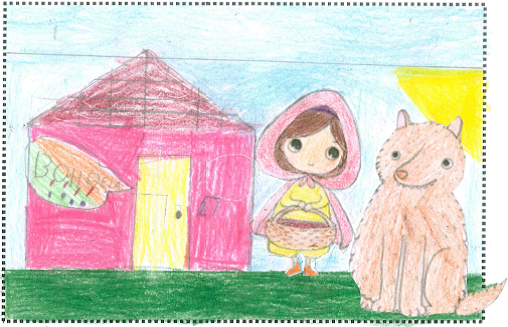“Red Riding Hood – illustrations”
While designing the program we had the idea to work on a story/content which is familiar almost to everyone. The fairytale of Little Red Riding Hood is probably the most illustrated fable around the world (with about 10 000 adjustments), and this is the reason why it is ideal for what we are looking for. The various versions of the story can make the changes of cultural values and standards comprehensible to anyone.
The opportunity to connect Little Red Riding Hood with various languages and cultural changes is also appreciated. Seeing cultural diversity as a source of wealth is a step towards a virtual European shared treasure.
Aspects:
• The storyline (biography) of the fairytale
• The Little Red Riding Hood (LRRH) in the illustrated book, translations of the story (an international compatison)
• LRRH in the existing teaching materials we use at school
• A constructivist approach to the story – different versions
• The story of LRRH in the digital means era (for educational purposes)
• Children’s perceptions of the story / preferences
• Using the LRRH story to develop visual literacy skills in school
Objectives
-
- to examine different versions of the same story
-
- to broaden the cultural experiences of the children
- to get a multicultural look on the story
- to understand that cultural experiences or limitations can affect the way we perceive a story
- to transfer a classic tale into modern times
- to provide children with criteria and tools, so that eventually they will be able to form or reform their visual literacy skills and express their points of view.
- To use the images to create a dialogue, to communicate the meaning in more than one languages (mother tongue, English)
-
Αctivity Α18: Red-riding hood and traditional roles
Step 1: In groups students discuss, write or draw
“How do you think the ideal RRH is?
Objective: personal aesthetic models
Step 2: Focus: “How do you think she feels in these pictures?” – in small groups children look at different images from the book and discuss.
Objective: compassion, empathy
Step 3: Focus: “What would you do in her place?” dramatization – impulsive improvisation
Objective: developing critical mind on interpreting human behaviours and actions
Step 4: Focus: “RRH/Wolf characters of the story” – creative workshop where Ss select materials (drawing, collage, pencils, notebooks) to select and present their option of the main characters of the story.
Objective: compassion, empathy
GREECE
Our tasks and activities on Little Red Riding Hood. Classes A, B, C, and D worked on the activities.
We put words, inprovised, drew, wrote new versions and created alternative endings for the story. We worked on the characters and changed them. We gave our new versions of the story.







Copy of Fairy-Tale-PowerPoint-Template.pdf
LITTLE RED RIDING HOOD.pdf

Wales: Little Red Riding Hood Activity
A18 A19.pdf
Wales version of Little Blue Riding HoodLittle Blue Riding Hood.pdf
=============================================================
CYPRUS
The Little Red Riding Hood story was changed by using our imagination and animation.Firstly we cooperated in pairs in order to write our own part of the story. After that we connected all the parts like a puzzle, we drew a picture for each part and at the end we created an amazing book. We called it "The Little Red Riding Hood and the Kind wolf " ,a story about friendship.
Finally , we used the story for role play.We were separated in groups cause all students should have the same chance for role play. We really enjoyed it!!!!
RED RIDING HOOD LESSON PLAN.pdf
CYPRUS VERSION.pdf






WORKSHEET.pdf
WORKSHEET.pdf
RED RIDING HOOD WORKSHEET1.pdf
RED RIDING HOOD WORKSHEET2.pdf
RED RIDING HOOD WORKSHEET3.pdf
=============================================================